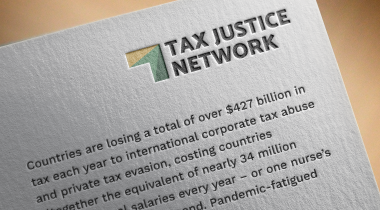
Andres Knobel ■ More beneficial ownership loopholes to plug: circular ownership, fragmented control and companies as parties to the trust

Beneficial ownership transparency has been defined as a key tool to tackle tax abuse, money laundering, corruption and the financing of terrorism among other illicit financial flows. It involves identifying the individuals (“beneficial owners”) who ultimately own, control or benefit from companies, partnerships, trusts and any other type of legal vehicles.
As described in our briefing on the state of play of beneficial ownership, more than 40 jurisdictions have or will soon have beneficial ownership registries. Some countries already provide public online access for free and in open data format.
However, several loopholes in beneficial ownership regulations for companies and trusts prevent registries from being truly effective. For instance, most beneficial ownership definitions apply very high thresholds (eg “more than 25 per cent” of ownership or voting rights) for an individual to be considered a beneficial owner. There’s also the issue of verifying information to make sure that people don’t lie.
Beneficial ownership regulations do usually also require the identification of the person with effective control or influence over the legal vehicle. However, this can be more difficult to do. Those checking beneficial ownership information will most likely find it easier to follow mechanical rules based on thresholds for ownership or voting rights to identify the person with effective control, regardless of whether the rules can truly suss out the person who truly has effective control over a legal vehicle.
Two loopholes allow individuals to control legal vehicles despite having very limited ownership interests, fooling any mechanical rule that considers only ownership thresholds:
Circular ownership

In the example pictured here, beneficial owner “Mary” would avoid being identified as a beneficial owner because she only has 2 per cent of shares and voting rights in company A, way below the 25 per cent threshold.
However, she controls company A because there is no other owner. The rest is just a circular ownership structure (company C owns company B. Company B owns company A, and company A owns company C).
While this simplified version makes the circular ownership structure obvious, if the legal ownership chain involved 10 different layers of companies (instead of only companies B and C), all incorporated in different countries, it would be much less obvious that a circular ownership structure is taking place.
Global Witness analysed UK’s Companies House data and found that 487 UK companies are part of circular ownership structures.
How to solve this loophole? Beneficial ownership registration must include the full ownership chain and circular ownership must be explicitly prohibited.
Control with fragmented ownership

In this second case illustrated here, it would appear again that no individual passes the 25 per cent threshold required to be identified as a beneficial owner of company A, especially Mary who only holds an indirect 3.4 per cent in company A through an ownership chain starting with company E. However, Mary should be considered a beneficial owner of company A because she is a beneficial owner of company E, that in turn controls company D and so on up to company B which controls 51 per cent of company A.
How to solve this loophole? Beneficial ownership registration must include the full ownership chain, and control at each layer should be considered when determining the beneficial ownership of company A.
Companies as parties to a trust
This loophole prevents a person from being identified as a beneficial owner of a trust despite having a large interest in the trust.

In the case of trusts, every party to the trust must be identified as a beneficial owner: the settlor(s), trustee(s), protector(s), beneficiaries and any other person with significant control over the trust. The problem is when a party to the trust is in itself a company. For example, if the trustee is a company, or if beneficiaries have interests in the trust through a company.
In the case illustrated here, while regulations don’t always state this explicitly, a holistic interpretation of beneficial ownership laws would require applying the corresponding definition to each type of legal vehicle. One would start applying the beneficial ownership definitions for trusts and try to identify every party. However, if one of the parties is a company, one would have to apply the definitions for companies, ie the 25 per cent ownership threshold.
In this example, the first two individuals which only hold 1 per cent each of interests in the trust (ie a right to obtain 1 per cent of the trust’s income or capital) are identified as beneficial owners because they are parties to the trust and thresholds are irrelevant for trusts. In contrast, Mary and the other person hold their interests in the trust through a company. Consequently, only the man passes the threshold of 25 per cent. This means that Mary, who indirectly holds an interest in the trust of 23.5 per cent (way more than the first two individuals) is not identified as a beneficial owner. In other words, by interposing a company as a party to the trust, it is possible to apply very high thresholds to the beneficial owners of trusts (which are not supposed to depend on thresholds).
How to solve this loophole? Every party to the trust should be identified as a beneficial owner. If companies are parties to the trust, every individual who holds at least one share or vote in the company should also be considered a beneficial owner of the trust (as if the company did not exist).
Our paper on beneficial ownership verification suggests other ways to prevent similar schemes, for example by establishing limits on the length of the ownership chain. People should be allowed to create many layers or complex combinations of trusts and companies only if they can prove there is a good reason to do it – achieving secrecy or minimising taxes should not be considered valid reasons!
Related articles
One-page policy briefs: ABC policy reforms and human rights in the UN tax convention

The Financial Secrecy Index, a cherished tool for policy research across the globe

When AI runs a company, who is the beneficial owner?
Insights from the United Kingdom’s People with Significant Control register
13 May 2025

Uncovering hidden power in the UK’s PSC Register

Vulnerabilities to illicit financial flows: complementing national risk assessments

New article explores why the fight for beneficial ownership transparency isn’t over

Do it like a tax haven: deny 24,000 children an education to send 2 to school
Asset beneficial ownership – Enforcing wealth tax & other positive spillover effects
4 March 2025



TJN know already, it’s the Swiss law firms and wealth managers on every corner in Zurich that help set up these structures. Until those in power who condone this illegal behaviour are stopped, nothing will ever change
Excellent examples. However, isn’t the better solution to eliminate the 25% rule and require every beneficial owner be disclosed?
There doesn’t seem to be a valid reason for this 25% rule. I’ve heard is to save administrative costs. But there are little administrative costs and having clerical staff cut and paste a few names onto a form. Even if there were 50 names, it would not cost more than half an hour of clerical time.
“In fact, due diligence requirements of the professionals requires considerable time. Here’s a blurb from the Canadian CPA website:”Other than the simplest cases, such as where one individual owns a single corporation, these recordkeeping requirements could be quite complicated. In particular, the broad definition of ‘significant control’ means you need to trace through a tiered corporate structure to identify which individuals ultimately hold interests and rights in shares. You then need to determine whether the holdings are significant. You also need to review the impact of a shareholders’ agreement or other similar agreements.” FROM Bruce Ball, FCPA, FCA, CFP – April 9, 2019 – Chartered Professional Accountants Canada
Regarding your first example. The legislation still requires naming an individual in control. Wouldn’t that be Mary?